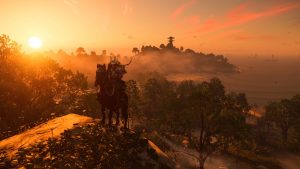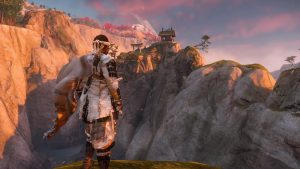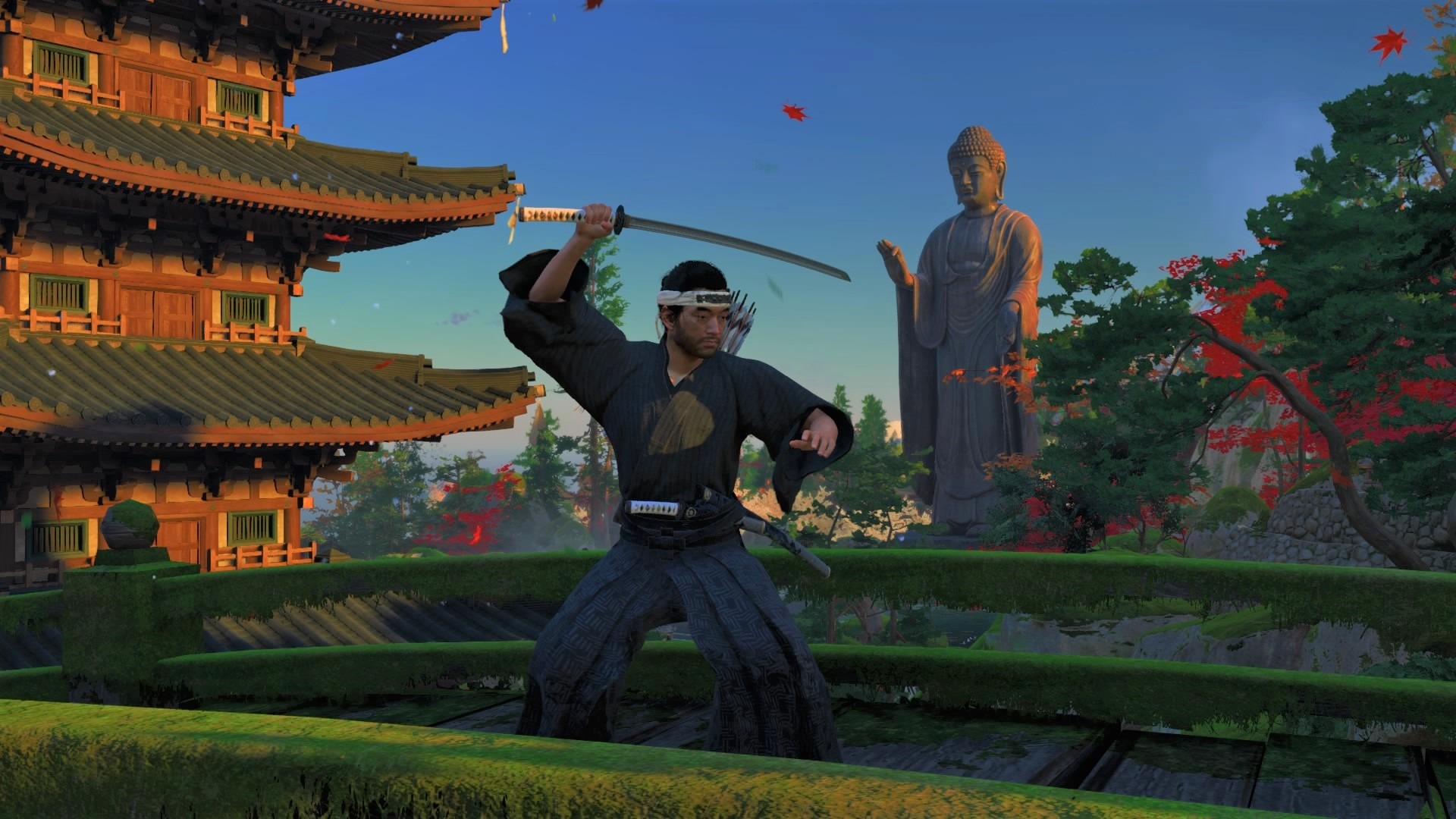Ghost of Tsushima is a glorious swan-song for PS4 and has landed with almost unanimously glowing reviews. The beauty, the waypoint system, the foxes…and the beauty. It’s just stunning. I loved the game. Totally loved it. But as someone who works in games middlewares, I began to wonder where upcoming tech could take games like this.

I won’t go on about how utterly impressive this game is (I’ve watched countless videos about that) but when I went into photo mode for the upteenth time, I began to wonder what this game will be like on PS5. Or if it had been made with the graphics of UE5. The reveal trailers for both were also stunning. Movie-quality stunning. And this seems to have been the tech obsession for quite a few years now: to make things more realistic and more visually beautiful. We’re being tempted with incredible rendering and real-time ray tracing to bring these worlds to life and draw us into the game and blur those boundaries between the real and the virtual. This is what we’re getting: better graphics, more visual features. Better and more. And some will argue that better tech on graphics will continue to drive our enjoyment with games, but I’m not so sure.
Film met a similar stage years ago, and it has a warning for us. It’s what I call the Jurassic Park problem. As a boy, I watched in amazement as apparently realistic dinosaurs stomped and roared before me on the cinema screen. No more muppet sharks in our movies, these things were real! And although the tech limitations only allowed them to be shown for a few minutes of the movie, I was fully drawn in and fully accepted them as being ‘real’. Then the sequels came out, with better tech in more of the movie, but I was underwhelmed. The tech had me convinced, it had done its job and now I was looking for something else: I wanted a good plot, engaging characters, to be taken on an emotional journey. Visuals weren’t good enough to carry the movie anymore, they simply became the accepted baseline from which the experience needed to be built. In fact, film has shown us that pushing forward better graphics in some cases can actually make the experience worse! Anyone remember the Lion King remake? Total flop. Incredibly realistic, it almost looked like a nature documentary at times. But it had lost all the charm of the 1994 release. Hollywood has shown us the pitfalls: graphics can get to a point where they can’t carry a movie anymore and then it becomes a case of using the right tech for the right film.

When playing Ghost, I feel our industry has come to our Jurassic Park moment. Because the thing about Ghost is, for all its stunning beauty, it uses the graphics just perfectly to convince us of the world, and then those wonderful people at Sucker Punch have crafted an ethereal beauty with care and love for every single detail. But as with the Jurassic Park sequels, I don’t think the games industry will be able to keep pulling the “better graphics” trick and still grab our attention. Maybe Sucker Punch know this already – they haven’t gone down the Lion King route of making it hyper-realistic, and instead have created an artistic experience for us filled with charm and emotion. I think they were helped by their inspiration: Akira Kurosawa, who pretty much created samurai as a genre of movie and inspired a range of global movies from Westerns to Star Wars. Using black-and-white tech, his movies still have the ability to amaze because of his creative genius and the way that he used setting and movement to captivate his audiences. Sucker Punch has realized that tech has a job to do, but it needs to be used appropriately. Would better graphics have made Ghost a better game? Maybe..ish. Or maybe they would have been tempted to make scenes more realistic…and less stunning. Further away from a Kurosawa world.
So how does the games industry move on from its Jurassic Park moment? Well, it’s worrying that all the fanfare about forthcoming next gen consoles and UE5 is about graphics and load times. Because Ghost already does both of those nearly as good as we need them to be. Obviously in a sequel, we want new stories and new ideas, but most of all studios need to look at every tech area other than graphics and bring it up to speed. Because despite its mesmerizing beauty, there were a few things in Ghost that just weren’t great. The lip syncing stood out, for instance. I mean, it’s decent enough in English, but not at the same standard as the graphics yet. Also, there’s no attempt to sync to the Japanese audio which looked stupid, broke immersion, and gave me a glimpse of what the non-English speaking world is having to put up with all the time. And the AI were dumb. Like really dumb. Which was super strange when the combat itself is so precise, yet enemies all hang off and wait their turn to be killed. Or sentries who just don’t….see me crouched almost directly in front of them?? If you must make it easier, do it by game design like having fewer enemies rather than making them so dumb that I’m constantly reminded I’m fighting coded AI, rather than a Mongol warrior. We still haven’t got cameras that take sensible positions in confined spaces and make the climbing better so it’s less like a platformer and more about choices and understanding my ability in the world. And talking of choices….make selecting a horse an actual choice, not just 3 skins on essentially the same horse.

So as the games industry passes its Jurassic Park moment, what areas of tech do we need to improve in the best games and across all games? Apart from these from Ghost, there are loads more examples for other games. But my specific annoyance, unsurprisingly for someone from an AI navigation middleware company, is the unsophisticated way that AIs navigate and move around virtual worlds. So many games seem to have spent most of their time (and memory budget) making huge, beautiful worlds and then have AIs that jerkily shuffle around like robots. Or AI that are so unaware of the world around them that they can’t follow you into a tunnel, or over a wall. And why, when we’ve spent years developing skin texture from being ironed flat to showing individual pores..do we then make AIs take unnaturally sharp turns when they move? Haven’t they ever seen how humans move? Or animals? We take smooth curves when we’re walking, and bigger curves when we’re running. We don’t walk about side-stepping everything! This is an example where our love of graphics has left other types of tech well behind. Maybe it’s because it’s easier to market a static close-up image of clothes fibers than it is to market human AIs that move like humans. But we need to turn our attention to all aspects of game tech so that we bring everything up to the same quality standards. While I’m seriously excited about this next generation of gaming, I’m just hoping games start to give as much love and attention to other areas of tech as they have given to graphics.


